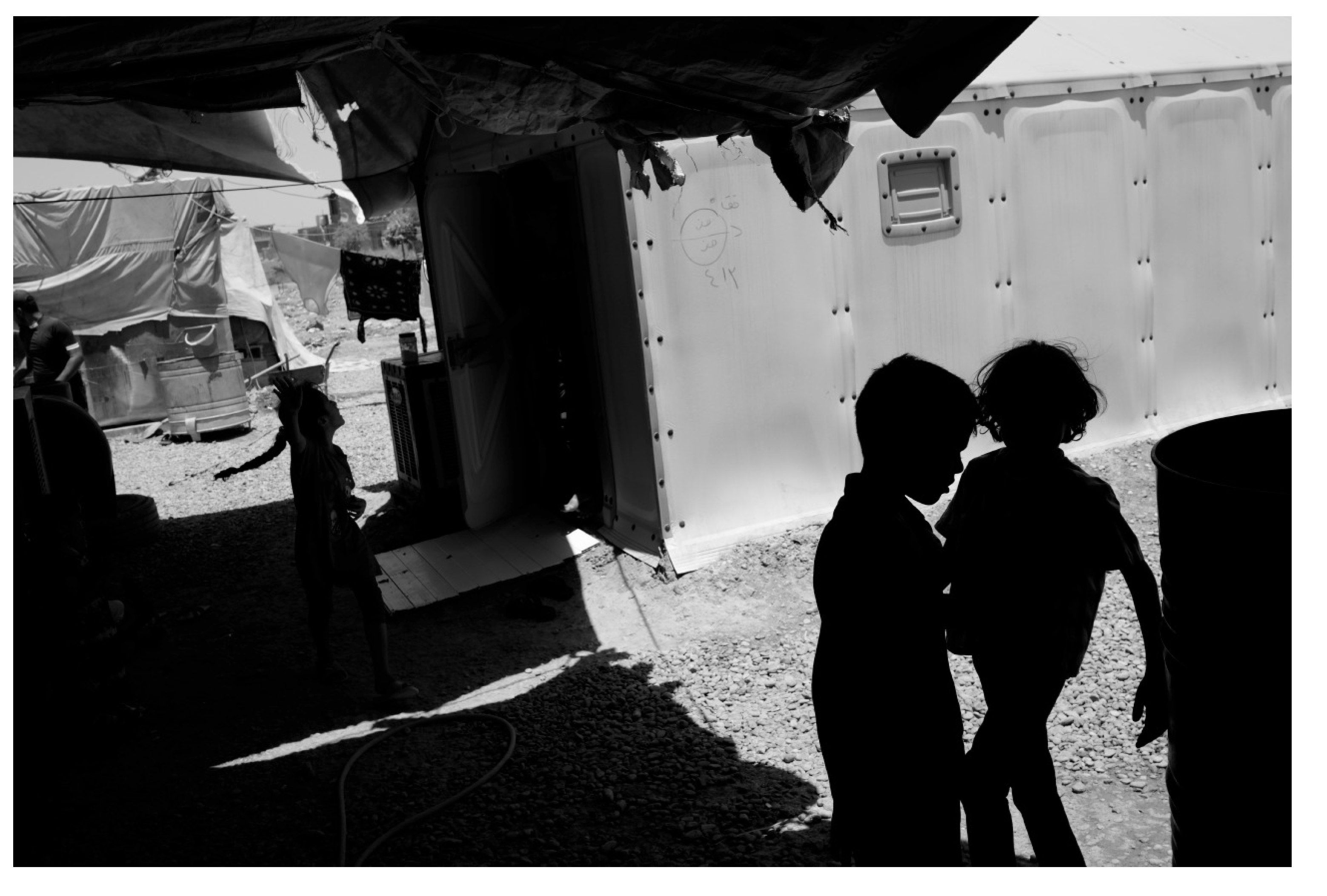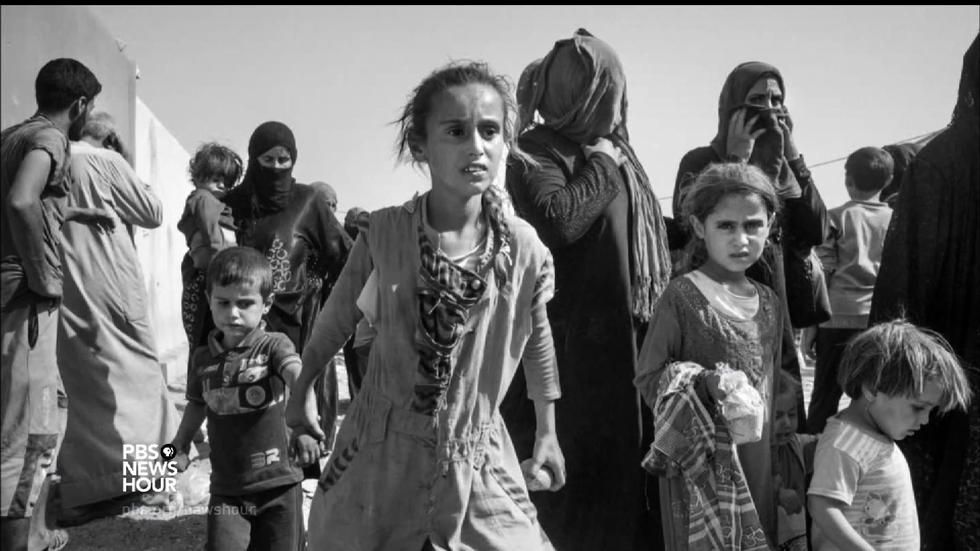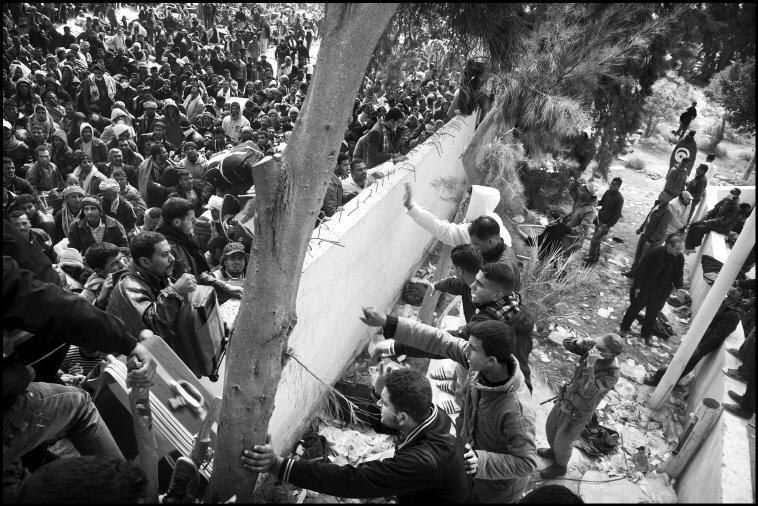Objective:
Using drawing tools and color, students will create an example of geometric Islamic art.
Students will demonstrate an understanding of the main ideas of Scott Anderson and Paolo Pellegrin's New York Times article, "Fractured Lands" and how this crisis affects art.
Introducing the Lesson:
First, students will learn about the general conflict of The Middle East, through the New York Times article, "Fractured Lands."
Click on the "Gateways" section at the right. Read through the Gateways as well as "Fractured Lands".
Answer the Fractured Lands "Gateways" questions:
- What were the reasons behind the Arab Spring protests?
- What is causing the Syrian Civil War?
- What are the main parties involved in the conflict?
- How has the rise of Isis affected the world?
- How has the rise of Isis affected the United States?
After you have examined the Middle East conflict, you will next learn about how this conflict affects art. Click on the following link from New York Magazine called "How Isis Is Destroying Ancient Art in Iraq and Syria" by Margaret Hoffmann.
Answer the following question:
Why is Isis destroying art?
As students, we can do very little to fight this destruction of art. But we CAN do something.
If Isis is destroying art, then we will put more art out into the world.
Creating Your Own Art:
Using a ruler, a compass, a protractor, and some colors, you will create a geometric design inspired by Islamic Art.
First, you should research a little about Islamic geometric art. A good place to start is by looking at two resources from Oxford's Museum of Science History:
Creating a Mosaic Tile Using Equilateral Triangles and Squares
-Many Islamic designs have circles. The circle represents infinity.
-Islamic Art often contains complex geometric patterns to support the idea of the infinity
-Islam forbids the image of people or animals
The following is one way to begin a geometric design. These steps were adapted from the Museum of Science History.
To start your drawing, use a compass to draw a cirlce on a piece of paper. Then, using a protractor, divide the circle into 45 degree sections, or 8 equal pie pieces.
Next, using a compass, draw a smaller circle about 1/2 the size of the first circle you drew.
Then, inside the larger circle, draw a square as shown:
Draw another square joining the following points.
Next, mark where the dividing lines meet the smaller circle. Then mark the points where the squares meet.
Then join the dots to create an 8 point star.
Here is another design that uses triangles and squares. Directions for this design is located HERE.
After you have created a basic geometric design, you can create further patterns in the design and add color. Try to make the colors into a pattern.
To complete your project, add a statement saying WHY you made it.
Assessment
Grade your work according to the following rubric.
|
Art Element |
Excellent 5 points |
Very Good 4 points |
O.K. 3 points |
|
||||
|
Pencil Design |
|
Very Good (4 points) Student was able to create an intricate design, but the execution was a little messy. Some shapes were made without a drawing tool. |
|
Needs Improvement (2 points). Student was unable to create a neat pencil design. Most shapes were drawn free-hand, without tools. |
||||
|
Pattern |
Excellent (5 points) Student work contains several complex patterns that are neatly constructed. |
Very Good (4 points) Student was able to create pattern, but some shapes or lines are messy and created without drawing tools. |
O.K. (3 points) Student created pattern is simple, and messy |
Needs Improvement (2 points) Student work does not have any identifiable pattern |
||||
|
Color |
Excellent (5 points) Student coloring was neat, looks like an 8th grader made it. Student used color to create a pattern |
Very Good (4 points) Student coloring was somewhat neat. Some areas are a little messy. |
O.K. (3 points) Student coloring is messy in several areas. The coloring does not create a pattern. |
Needs Improvement (2 points) Student work is incomplete, and messy It does not look like 8th grade level work |
||||
|
Overall Effort/ Neatness |
Excellent (5 points) Every day I came in ready to work, and followed directions well, and created a successful, well crafted artwork |
Very Good (4 points) Almost every day I came in with a positive attitude and was ready to work. I created a pretty successful artwork |
O.K. (3 points) I came to art most days ready to work. My project, effort and attitude were OK |
Needs Improvement (2 points). I came to art multiple days unfocused and not ready to work. My project, attitude and effort were NOT successful. |
Add up your score!
A Masterpiece: 17-20 points
Pretty Good!: 13-16 points
Eh, could have used a bit more...: 12 or fewer- points
Last, but most important. Put your artwork out into the world!
There are many places you could contact, such as your local Islamic center or Mosque. Ask them if you could donate your artwork or display it.
This is an art lesson that combines:
- The study of Islamic Art
- The identification of the main issues of Scott Anderson and Paolo Pellegrin's New York Times article, "Fractured Lands".
- Issues Presented from the Pulitzer Center Gateways
- Making positive contributions to the art world
The medium is not the most important aspect of this lesson, but rather the ideas expressed by the student. The final product does not have to be a painting, but could be a drawing or sculpture, depending on what materials are available. Feel free to modify the lesson as you see fit. The main idea of the lesson is that through the conflict in the Middle East, artwork is being destroyed. The creation of new art can help to contribute positively to this issue.





